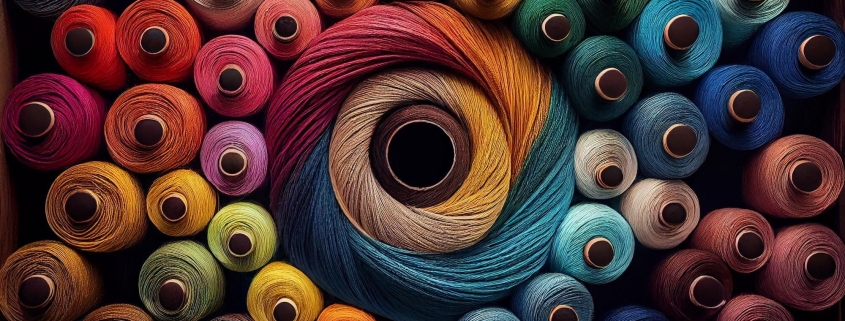In the realm of digital embroidery, selecting the right fabric is paramount to achieving a flawless and visually appealing end product. The choice of fabric not only affects the embroidery process but also influences the durability and overall aesthetic of the final piece. This article explores the characteristics of various fabrics and highlights the best options for digital embroidery, considering factors such as texture, stability, and the type of design being stitched.
1. Cotton:
Cotton is a perennial favorite among embroiderers for its versatility and widespread availability. Its natural fibers offer a smooth surface that readily accepts embroidered designs, making it an excellent choice for intricate patterns and detailed stitching. Cotton’s breathability and softness also contribute to the comfort of finished garments, making it suitable for a wide range of embroidered products, from clothing to home decor items.
2. Linen:
Linen, known for its distinctive texture and durability, is another fabric that lends itself well to digital embroidery. The slightly rough texture of linen adds a unique dimension to embroidered designs, giving them a rustic and organic feel. While linen may pose challenges for extremely detailed or small designs due to its texture, it is ideal for larger motifs and projects where a textured background enhances the overall aesthetic.
3. Polyester:
Polyester fabric has gained popularity in the world of digital embroidery due to its smooth and consistent surface. The synthetic nature of polyester allows for vibrant and long-lasting color retention, making it a preferred choice for designs that require a broad spectrum of colors. Additionally, polyester’s resistance to wrinkles and shrinking makes it a practical option for embroidered items that may undergo regular use and washing.
4. Wool:
For a touch of luxury and warmth, wool fabrics offer an excellent canvas for digital embroidery. Wool’s dense and soft fibers create a plush surface that showcases embroidery with depth and richness. While wool may be less suitable for lightweight or delicate designs, it excels in projects where a tactile and luxurious finish is desired, such as embroidered scarves, blankets, or winter apparel.
5. Silk:
Silk, with its smooth, lustrous surface, is a premium choice for digital embroidery projects that demand elegance and refinement. The fine fibers of silk allow for intricate detailing, making it suitable for delicate and intricate designs. However, due to its delicate nature, silk may require extra care during the embroidery process to avoid damage. Silk is often chosen for high-end fashion pieces, accessories, and decorative items.
6. Canvas and Denim:
For those seeking a robust and sturdy fabric, canvas and denim are excellent choices for digital embroidery, especially for items like tote bags, jackets, or heavy-duty accessories. The thickness and durability of these fabrics provide stability for the embroidery process, ensuring that the designs stand out prominently. The rugged appearance of denim also adds a casual and trendy vibe to embroidered items.
Considerations for Fabric Selection:
- Stabilizer Compatibility: Different fabrics may require specific stabilizers to support the embroidery process. Understanding the compatibility between the chosen fabric and stabilizer is crucial for achieving clean and precise stitching.
- Thread Type: The type of thread used for digital embroidery can influence the fabric choice. For example, delicate fabrics may benefit from finer threads, while heavier fabrics may accommodate thicker threads for a bolder appearance.
- Design Complexity: The intricacy of the intended design plays a role in fabric selection. Smoother fabrics like cotton or polyester may be preferred for detailed designs, while textured fabrics like linen can enhance larger, more organic motifs.
Conclusion:
In the world of digital embroidery, the choice of fabric is a pivotal decision that can significantly impact the success of a project. The best fabric for digital embroidery depends on the desired outcome, considering factors such as texture, stability, and the type of design being executed. Whether opting for the classic appeal of cotton, the rustic charm of linen, or the luxurious feel of silk, understanding the characteristics of different fabrics ensures that each stitch contributes to a masterpiece of artistry and craftsmanship.



